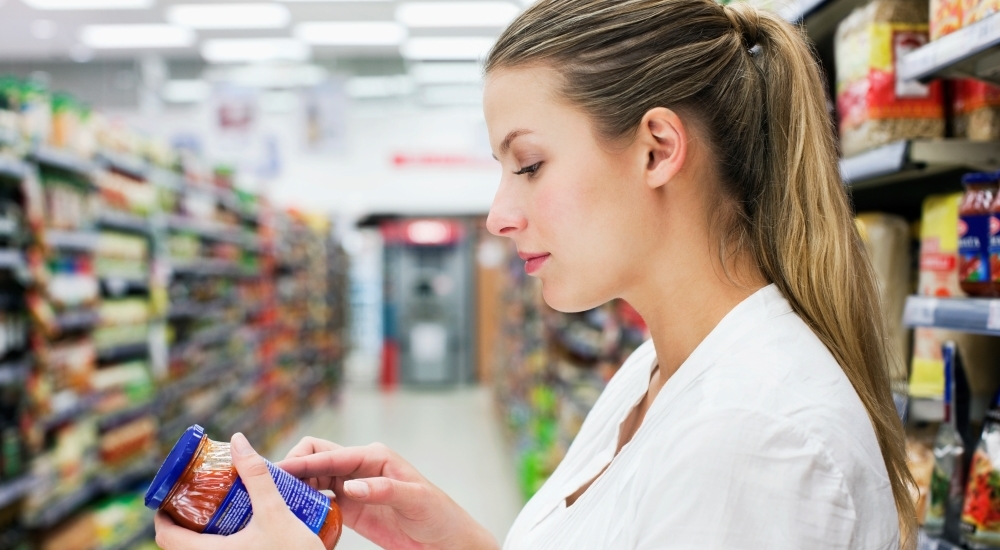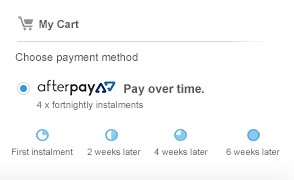Chemicals & Additives
Author: Belinda Lawlor
[@access_control@] [@article_id@] [@blog_author@] [@blog_content@] [@blog_id@] [@blog_subheader@] [@blog_subject@] [@category_id@] [@category_name@] [@category_ref@] [@category_subheader@] [@ccat_id@] [@compat_id@] [@compat_list_id@] [@compatcat_description@] [@compatcat_description2@] [@compatcat_fullname@] [@compatcat_name@] [@compatcat_ref@] [@content@] [@content_allow_reviews@] [@content_author@] [@content_compatibility_code@] [@content_description1@] [@content_description2@] [@content_description3@] [@content_external_ref1@] [@content_external_ref2@] [@content_external_ref3@] [@content_external_src@] [@content_fullpath@] [@content_id@] [@content_label1@] [@content_label2@] [@content_label3@] [@content_level@] [@content_module@] [@content_name@] [@content_ref@] [@content_short_description1@] [@content_short_description2@] [@content_short_description3@] [@content_type_code@] [@content_type_id@] [@content_type_name@] [@content_wufoo_form@] [@date_posted@] [@date_updated@] [@description@] [@description2@] [@external_ref@] [@gp_restriction@] [@id@] [@name@] [@page_content@] [@page_editor@] [@page_header@] [@page_id@] [@page_index@] [@page_subheader@] [@parent_ccat_id@] [@parent_content_id@] [@parent_id@] [@rating@] [@reviews@] [@short_description@] [@sortorder@] [@subtitle@] [@templatebody@] [@templatefoot@] [@templatehead@] [@templatesearch@] [@thumb@](CODE) [@thumb_alt@](CODE) [@thumb_alt1@](CODE) [@thumb_content_type_id@] [@timestamp@] [@title@] [@url@]
Where once we might have joked about not giving the kids red cordial, now we have the science to back it up. Studies have shown beyond a shadow of a doubt that certain synthetic colourings cause hyperactivity in kids. Unfortunately, hyperactivity is not the only side effect and it’s not limited to kids. The chemicals and additives in our food can also exacerbate a whole range of problems like asthma, migraine, insomnia and learning and behavioural problems. It seems to be the price we pay for having an enormous range of ready-made or out-of-season food. But if you think the price is too high, read on to learn more about food additives and chemicals and how to spot the ones that are unsafe for us to eat.

What is a chemical or additive
If you think about it, food additives have been around since the day dot. Salt has long been used to preserve meats, and cloves were stuck into hams to stop bacteria from growing. The chemical and additive business really came into its own during the 20th century when we began to import food from faraway places and keep them in our fridges. We began to expect a wide variety of foods all year around. This could only be made possible with the use of chemicals and additives.
Food additives are chemicals that work by enhancing the flavour, colour, appearance or texture of food. Some additives have been around for millenniums, like salt or vinegar, but most of the additives these days are synthetic. Synthetic chemicals are made in a laboratory and can be copies of naturally occurring preservatives. Sometimes chemicals are added to our food to make sure it doesn’t go off before we buy it, but a lot are added to make the food look better, and last for much longer than they naturally would. It’s got to the point now where most non-organic and processed foods have additives in them.
The most commonly found additives are preservatives, bulking agents, colour enhancers, flavour enhancers, acidity regulators, sweeteners, emulsifiers, stabilisers, thickeners, gelling agents, anti-caking agents, raising agents, glazing agents, antioxidants and humectants.
What do they do
- Acidity regulators keep the acid levels stable in food, to help food last longer and taste better;
- Anti-Caking Agents stop food from clumping together and improves flow when you pour it out of the carton;
- Antioxidants bind themselves to oxygen to make the food’s colours brighter, and they also prevent food going rancid;
- Bulking agents add volume to the food, and often don’t have any nutritional value;
- Colours add, enhance and sometimes restore colour to foods;
- Emulsifiers keep the oil and water in food from separating;
- Flavours adds extra taste to the food;
- Gelling Agents thickens food and makes it into a jelly;
- Glazing Agents coat food and makes it look shiny and desirable;
- Humectants stop food from drying out;
- Preservatives help stop food from going off;
- Raising Agents give food more volume;
- Sweeteners are an artificial low-kilojoule sugar replacement;
- Stabilisers keep the consistency of the food at a certain level;
- Thickeners make a food thicker and flow better.
How do you identify a chemical or additive
On food labels, an additive is generally given a number, but sometimes the additive or chemical is named. If a product has come from Europe, it’ll have an E in front of the number, and that means the European Commission has approved the additive for use in Europe. That’s why you sometimes hear about E numbers. In Australia, the number system is the same, but without the E. It does get a little confusing, because if you buy something from Europe and it has an additive number without the E in front of it, it means that the European Commission hasn’t approved it.

How to spot nasty food additives and chemicals
There are lots of handy applications you can download for your phone which means you can easily look up a food additive and find out if it has any known harmful effects or not. One of my favourites is called the Chemical Maze by Bill Statham. This application also includes a handy directory of personal care and cosmetic ingredients so you can avoid putting nasty ingredients on your skin too.
Alternatively, you can try and include certified organic foods in your diet. By eating organic food, all the hard work has been done for you as no nasties are allowed during the farming and growing of or food or during the manufacturing processes. Easy!
How are they labelled
- Colours are coded from 100 to 181. They range from naturally derived colours such as riboflavin (101), carotene (160a) and saffron (164), to synthetically produced colours such as tartrazine (102), sunset yellow FCF (110), and amaranth (123);
- Preservatives are coded from 200 to 252 and mainly come from sulfates, which come from sulfur, a chemical element that’s used in gunpowder and in matches. There are a growing number of people who are becoming allergic to sulfates because they’re used so widely;
- Acidity regulators from 260 to 270 range from vinegars to lactic acid (270). Those numbered from 326 to 381 are generally naturally-occurring minerals;
- Antioxidants from 300 to 322 are generally a form of vitamin such as potassium ascorbate (303) which is salt of vitamin C, yet there is the petroleum-based butylhydroquinone (319), butylated hydrozyanisole (320) and butylated hydroxytoluene (321);
- Thickeners and stabilisers from 400 to 418 are generally salts or seaweed extract such as agar (406) or gums such as xanthan gum (415), but those numbered 1201 to 1450 are synthetic and mostly genetically modified;
- Humectants from 420 to 422 vary from sorbitol (420) to glycerin (422), while numbers 1518 to 1520 are used as coatings on fruits;
- Emulsifiers from 431 to 450 contain the polysorbates (433, 435, 436) that are petroleum based. Those numbered 471 to 492 are not petroleum based;
- Acidity regulators from 500 to 529 include synthetic additives like sodium carbonate (500) and magnesium carbonate (504) and ones that sound like they’re from a science fiction movie like hydrochloric acid (507) but which are actually safe for use in food;
- Anti-caking Agents are from 530 to 560, and contains magnesium oxide (530) and magnesium silicate or talc (553);
- Flavour enhancers are from 620 to 641, which is where the most well known additive hides: monosodium glutamate (MSG) (621). Most numbers up to 631 contain some MSG;
- Glazing Agents from 901 to 905b are waxes like beeswax (901), carnauba wax (903), resin shellac (904), and petrolatum or petroleum Jelly (905b).
- Sweeteners from 950 to 968 include aspartame (951) and saccharin (954).
How do you know which chemical or additive is safe
Not all food with numbers are automatically laden with chemicals or synthetically produced. Yet it’s a pretty good guide that the more numbers a food product has, the more processed it is. Some food additives are perfectly natural ingredients that have been used for centuries to preserve food or to enhance taste. Saffron (164), for example, is a colouring that’s harvested from the crocus plant and is safe for most people.
But to unravel the differences between safe and unsafe chemicals, you’ll need to use a reference guide It also depends on what, if any, reactions you are having to certain chemicals. One additive that may be safe for one person may provoke a reaction in someone else. Look at your labels, and refer back to your reference guide, and eliminate all the additives that are causing problems.
For a simple-to-use reference tool, you can go to our list of chemicals and additives at Our Food, or download our handy iPhone app. Here you'll be able to find all the information you need in a format that's easy to whip out whilst you're shopping.
Some chemicals and additives are banned overseas and allowed here. These are:
- Colours: tartrazine (102), quinoline yellow (104), sunset yellow FCF (110), cochineal (120), azorubine or carmoisine (122), amaranth (123), ponceau 4R (124), erythrosine (127), allura red AC (129), indigotine (132), brilliant blue FCF (133), green S (142), brilliant black BN or PN (151), brown HT (155), aluminium (173), silver (174), gold (175);
- Antioxidants: butylated hydrozyanisole (320), calcium disodium EDTA (385);
- Flavour enhancers: disodium 5’- ribonucleotides (635);
- Sweeteners: calcium cyclamate (952), saccharin (954).
What are the possible health effects
Many additives can cause allergic reactions. These range from hives to diarrhoea to MSG headaches to hyperactivity in children to asthma, ADHD, plus many more.
Studies, such as the Southampton Report, have found that food additives affect children’s behaviour. The Southampton Report was published in the UK in 2007 and was commissioned by the Food Standards Agency. The report found that mixing particular food colourings with the preservative sodium benzoate (211)—which is found in soft drinks—caused hyperactivity in children. It is interesting to note that the six colourings used are all banned overseas but not in Australia. The colourings were tartrazine (102), quinoline yellow (104), sunset yellow (121), carmoisine (122), ponceau 4R (124) and allura red (129).
Food Standards Australia and New Zealand (FSANZ) are in charge of the Food Standards Code. They look at laboratory tests and decide if the additive or chemical is safe, if it’s necessary and if it’s clearly labelled. After the Southampton Report was published, the FSANZ refused to ban the six colourings in Australia. They claimed that Australian children were consuming colourings in doses well below the maximum permitted levels.
Some companies have taken up the challenge not to use chemicals and additives. Aldi have very recently become the first supermarket chain in Australia to ban artificial colours from their foods.
For more information:
- The Australian-based Food Intolerance Network consists of 8,000 families from around the world and gives an independent viewpoint on the effects of additives and chemicals. The founder, Sue Dengate, has written a series of books called Fed Up about the effects of additives on children. See: http://fedup.com.au/
- For a summary of the Southampton Report, go to: http://www.food.gov.uk/news/newsarchive/2007/sep/foodcolours
- The FSANZ has published a book called Choosing the Right Stuff, which is a shopper’s guide to additives, kilojoules and fat content. It has a good summary of how food additives act in foods.







